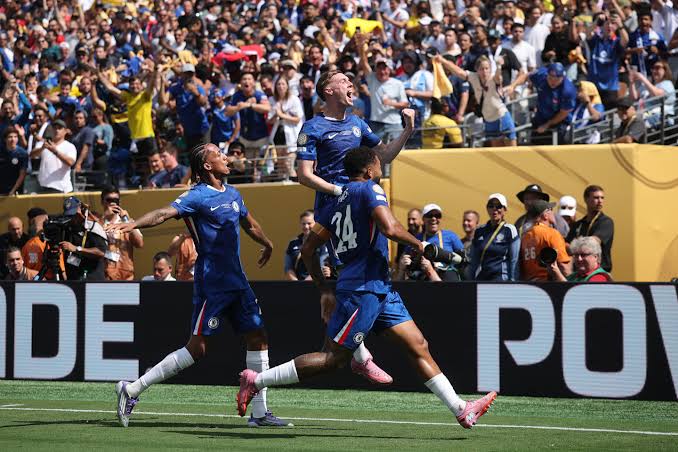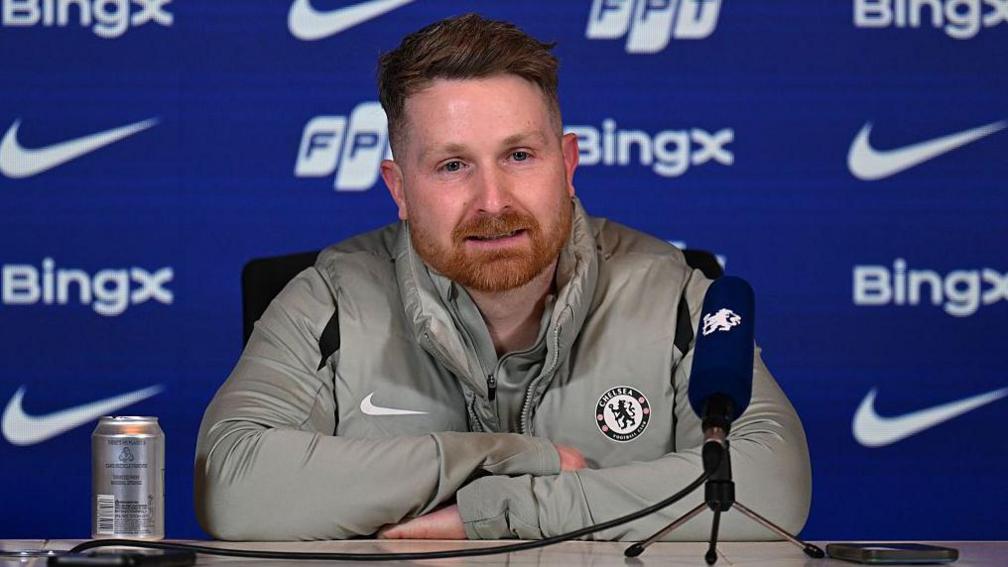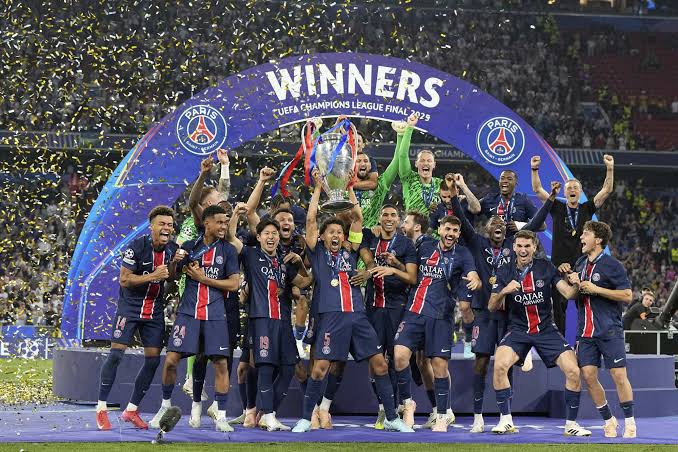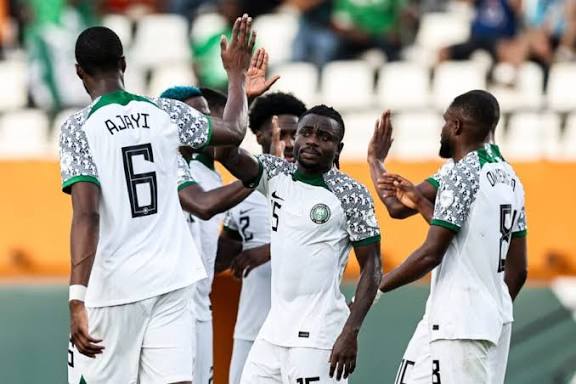Chelsea vs PSG: Highlights, tactical takeouts in 2025 FIFA CWC final

Chelsea players in celebration after Cole Palmer scores a goal. Photo Credit- Chelsea FC
Chelsea stunned Paris Saint-Germain (PSG) with a 3-0 victory in the FIFA Club World Cup final at MetLife Stadium, New Jersey, claiming their second world title in front of 81,118 fans, including US President Donald Trump and FIFA president Gianni Infantino. Described as a “tactical masterclass” by Enzo Maresca, Chelsea outmaneuvered the Champions League winners, ending PSG’s hopes of a perfect season. This piece is set to explore the tactical formations, officiating, standout players, goal details, and comparisons between the two sides.
Chelsea’s tactical analysis
Enzo Maresca deployed a fluid 4-2-3-1 that changed into a 5-3-2 defensively and a 3-2-5 in attack. This structure neutralized PSG’s wingers, Ousmane Dembele and Desire Doue, by crowding the flanks with Marc Cucurella and Malo Gusto dropping deep. Chelsea’s high press, with a 3-2-5 shape, forced PSG’s Gianluigi Donnarumma into long balls, targeting gaps left by Achraf Hakimi and Nuno Mendes’ forward runs. Their 31.33 positional attacks per game and six fast-break goals in the tournament, led by Pedro Neto’s three strikes, showcased their counter-attacking ability. In the second half, Chelsea’s deep 5-3-2 block, with 10 men behind the ball, absorbed PSG’s pressure.
PSG’s tactical analysis
Luis Enrique’s 4-3-3 relied on a relentless 6.7 high press and 59% possession, with Vitinha and Joao Neves controlling midfield. Their wide play, driven by Hakimi and Kvaratskhelia, aimed to stretch Chelsea. PSG’s 78% first-half possession against Real Madrid set the tone for early dominance. However, their high line, exposed by Botafogo’s 1-0 upset, was exploited by Chelsea’s counters. In the second half, PSG pushed numbers forward, maintaining their 4-3-3 but leaving gaps. Enrique’s minimal work, despite their one goal conceded all tournament, proved costly as Chelsea’s press disrupted their rhythm.
RELATED STORIES
Enzo Maresca: How Italian tactical maestro has reshaped Chelsea
Who is João Pedro and why is Chelsea signing him? Everything you need to know
Chelsea’s tactical flexibility outshone PSG’s rigidity. While PSG’s 4-3-3 generated 16 goals from 9.84 xG (2.33 per 90), their high line failed against Chelsea’s 6 fast-break goals. Chelsea’s 5-3-2 defensive shape stifled PSG’s wingers, unlike their open 4-2-3-1 against Flamengo, which conceded three goals. PSG’s 23-second average ball recovery time (vs Real Madrid 45-second) was neutralized by Chelsea’s 0.85 first-half xGA, the lowest in the tournament.
Reviewing the match officiating
The match, officiated by Iranian-Australian referee Alireza Faghani in his first Club World Cup final, was largely well-handled but not without controversy. Faghani issued five yellow cards: Chelsea’s Malo Gusto (40’), Moises Caicedo (44’), Levi Colwill (82’), and Pedro Neto (dissent), and PSG’s Ousmane Dembele (dissent) and a pivotal red card to PSG’s Joao Neves in the 85th minute for pulling Cucurella’s hair, confirmed after a VAR review. The red card, deemed violent conduct, prompted Neves to storm off without protest. The decision was widely supported by Chelsea fans on social media. However, PSG fans, criticized the “light” five minutes of stoppage time despite a hydration break and multiple stoppages.
Faghani’s use of goal-line technology and the new Advanced Semi-Automated Offside system ensured accurate decisions, with no offside controversies. A late brawl, sparked by Donnarumma catching Joao Pedro’s face, was swiftly managed by Maresca separating players. Overall, Faghani’s firm control maintained order, though PSG’s frustrations led to reckless challenges, like Nuno Mendes’ yellow-card lunge.
Chelsea outstanding players
Cole Palmer, named “man of the match,” Palmer was electric, scoring twice (22’, 30’) and assisting Joao Pedro’s goal (43’). His 18 goals and 14 assists in 52 games in 2024/25, including 3.2 key passes per 90, drove Chelsea’s attack. His ability to exploit spaces, as seen in his curling shots past Donnarumma, was pivotal. Another outstanding player from the Blues is Robert Sanchez, the goalkeeper delivered a flawless performance, making crucial saves against Kvaratskhelia (48’) and Dembele (50’). His darting off his line to punch crosses and near-error-free distribution (74.5% pass completion). Finally, Joao Pedro, the £30 million signing scored his third tournament goal, lobbing Donnarumma after Palmer’s through-ball. His versatility, dropping deep to link play, added dynamism.
PSG’s most outstanding players
Vitinha, despite the loss, Vitinha’s 100+ passes in five tournament games showcased his control, with a 98% pass completion rate. His probing in the second half, though fruitless, kept PSG alive. Moreover, Dembele as expected to shine after his goal against Real Madrid, Dembele struggled, missing early chances and earning a yellow for dissent. His 35 goals and 14 assists in 2024/25 were nullified by Chelsea’s tight marking. Finally, Kvaratskhelia the Georgian star tested Sanchez with a curling shot (48’) and nutmegged Gusto, but his impact faded against Chelsea’s deep block. His 3 tournament goals remained a threat.
Palmer’s match-defining brace and assist outshone Dembele’s lackluster display. Sanchez’s clean sheet and 71.8% save percentage trumped Donnarumma’s error. Joao Pedro’s clutch finishing matched Kvaratskhelia’s flair but proved more decisive. Chelsea’s stars executed Maresca’s plan perfectly, while PSG’s relied on individual moments that never materialized.
RELATED STORIES
2025 FIFA CWC Final: How Enzo Maresca’s Chelsea can defeat PSG
Desire Doue: PSG’s rising star and the 2025 Ballon d’Or Kopa Trophy candidate
Analyzing the goals scored
Chelsea’s goals stemmed from clinical counters and individual brilliance, with Palmer’s brace and assist exploiting PSG’s defensive lapses. PSG, despite 16 tournament goals (10 in the first half), failed to score, with Ramos missing an open goal and Dembele and Doue squandering early chances. Chelsea’s 14 goals by 10 different players (excluding own goals) contrasted with PSG’s reliance on Dembele, Doue and Kvaratskhelia.
Chelsea’s 3-0 rout defied expectations, with PSG favored at 64.4% by Opta’s supercomputer, according to The Analyst. PSG’s 18-0 aggregate in their last five knockout games, including a 4-0 Real Madrid thrashing, made them “unbeatable.” Yet, Chelsea’s tactical discipline; 5-3-2 defensively, 3-2-5 in attack prevented PSG’s 4-3-3. Chelsea’s 0.85 first-half xGA, the lowest in the tournament, neutralized PSG’s 5.85 first-half xG. Their 6 fast-break goals outpaced PSG’s 2, and their 100 shots reduced PSG’s output.
PSG’s high press (23-second ball recovery time) was ineffective against Chelsea’s deep block and long-ball strategy. The red card to Neves, reducing PSG to 10 men, compounded their woes. Chelsea’s 14 goal contributors, including Joao Pedro’s debut heroics, showcased squad depth, unlike PSG’s reliance on Dembele. The post-match brawl reflected PSG’s frustration.
Conclusion
Chelsea’s 3-0 victory was a masterclass in tactical adaptability, with Maresca’s 5-3-2/3-2-5 outsmarting Enrique’s 4-3-3. Palmer’s brace and assist, Sanchez’s heroics, and Joao Pedro’s flair defined the win, while PSG’s stars faltered under pressure. Faghani’s officiating, bolstered by VAR, was firm, though stoppage time sparked debate. Chelsea’s counter-attacking precision and defensive solidity exposed PSG’s high-line vulnerabilities, cementing their status as world champions and earning £90 million, according to BBC Sports. This historic final, the first between European sides, marked Chelsea’s resurgence and PSG’s rare stumble.




